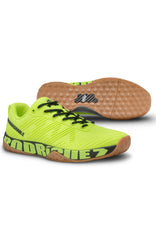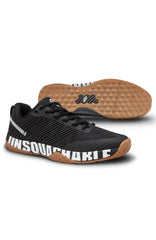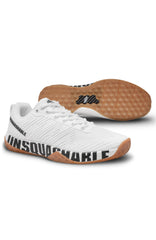How to Choose a Padel Racket
February 20 2024

When selecting the ideal padel racket, it is essential to grasp the key factors influencing racket performance: shape, balance, weight and material.
One pivotal aspect distinguishing the performance of padel rackets lies in their shapes, each catering to different player preferences and styles.
Diamond-shaped padel rackets, with their wider top narrowing towards the handle, epitomise power. This design, favoured by numerous professional players, excels in delivering formidable smashes, albeit requiring precise sweet spot contact, particularly challenging for amateur players.
In contrast, teardrop-shaped padel rackets strike a balance between power and forgiveness, making them a popular choice among intermediate players seeking versatility in their gameplay.
Meanwhile, round-shaped padel rackets, characterised by a circular head, offer accessibility to players of all levels, boasting a larger sweet spot conducive to for attacking as well as defensive play.
Moving beyond the head shape, racket weight emerges as a crucial consideration, typically ranging from 340 to 390 grams. Lighter rackets provide more agility and manoeuvrability, ideal for quick swing speeds, while heavier rackets empower physically robust players to unleash controlled, powerful shots. The optimal weight hinges on individual strength and playing style, ensuring a harmonious blend of power and manoeuvrability.
Material composition significantly influences racket performance, encompassing key components such as the core, impact surface, and frame. The core, crafted from either Foam (Polyethylene) or E.V.A. (Ethylene Vinyl Acetate), dictates the racket's feel and responsiveness. Foam cores, softer in texture, facilitate extended ball contact and enhance power generation, making them an excellent choice for novice and intermediate players seeking enhanced playability. Conversely, E.V.A. cores, characterised by a firmer feel, cater to advanced players seeking precision and control in their shots, albeit requiring good playing technique.
The impact surface material, whether fibreglass or carbon/graphite, influences the racket's overall performance and durability. Fibreglass, cost-effective yet heavier, imparts a softer feel conducive to comfortable play, while carbon/graphite surfaces offer enhanced durability and a firmer, more responsive touch.
Similarly, the frame material, predominantly fibreglass or carbon/graphite, plays a pivotal role in racket performance. Carbon/graphite frames, ensure a lightweight construction, offering superior manoeuvrability and responsiveness, ideal for advanced players seeking uncompromising performance. On the other hand, fibreglass frames, although heavier, provide an affordable entry point for beginners and intermediate players honing their skills.
In navigating the myriad of options, it's paramount to align racket specifications with individual playing preferences and skill levels. Novices may gravitate towards foam and fibreglass rackets for their forgiving nature and affordability, while advanced players may favour E.V.A. cores and carbon/graphite constructions for precision and performance excellence.
Ultimately, selecting the perfect padel racket entails a nuanced understanding of one's playing style, skill level and desired performance attributes, ensuring a seamless fusion of power, control and comfort on the court.
One pivotal aspect distinguishing the performance of padel rackets lies in their shapes, each catering to different player preferences and styles.
Diamond-shaped padel rackets, with their wider top narrowing towards the handle, epitomise power. This design, favoured by numerous professional players, excels in delivering formidable smashes, albeit requiring precise sweet spot contact, particularly challenging for amateur players.
In contrast, teardrop-shaped padel rackets strike a balance between power and forgiveness, making them a popular choice among intermediate players seeking versatility in their gameplay.
Meanwhile, round-shaped padel rackets, characterised by a circular head, offer accessibility to players of all levels, boasting a larger sweet spot conducive to for attacking as well as defensive play.
Moving beyond the head shape, racket weight emerges as a crucial consideration, typically ranging from 340 to 390 grams. Lighter rackets provide more agility and manoeuvrability, ideal for quick swing speeds, while heavier rackets empower physically robust players to unleash controlled, powerful shots. The optimal weight hinges on individual strength and playing style, ensuring a harmonious blend of power and manoeuvrability.
Material composition significantly influences racket performance, encompassing key components such as the core, impact surface, and frame. The core, crafted from either Foam (Polyethylene) or E.V.A. (Ethylene Vinyl Acetate), dictates the racket's feel and responsiveness. Foam cores, softer in texture, facilitate extended ball contact and enhance power generation, making them an excellent choice for novice and intermediate players seeking enhanced playability. Conversely, E.V.A. cores, characterised by a firmer feel, cater to advanced players seeking precision and control in their shots, albeit requiring good playing technique.
The impact surface material, whether fibreglass or carbon/graphite, influences the racket's overall performance and durability. Fibreglass, cost-effective yet heavier, imparts a softer feel conducive to comfortable play, while carbon/graphite surfaces offer enhanced durability and a firmer, more responsive touch.
Similarly, the frame material, predominantly fibreglass or carbon/graphite, plays a pivotal role in racket performance. Carbon/graphite frames, ensure a lightweight construction, offering superior manoeuvrability and responsiveness, ideal for advanced players seeking uncompromising performance. On the other hand, fibreglass frames, although heavier, provide an affordable entry point for beginners and intermediate players honing their skills.
In navigating the myriad of options, it's paramount to align racket specifications with individual playing preferences and skill levels. Novices may gravitate towards foam and fibreglass rackets for their forgiving nature and affordability, while advanced players may favour E.V.A. cores and carbon/graphite constructions for precision and performance excellence.
Ultimately, selecting the perfect padel racket entails a nuanced understanding of one's playing style, skill level and desired performance attributes, ensuring a seamless fusion of power, control and comfort on the court.







